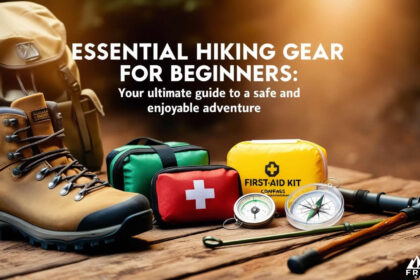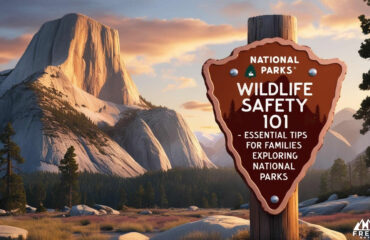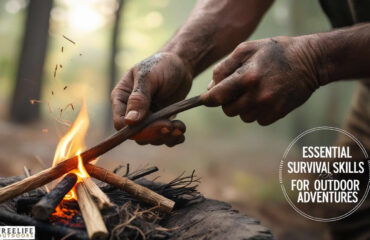
Discover essential hiking gear for beginners to ensure safety, comfort, and enjoyment on your outdoor adventures.
Essential Gear for Beginners in Hiking: An Introduction to the Basics
Hiking is a rewarding outdoor activity that allows individuals to connect with nature while enjoying physical exercise. However, proper planning and preparation are crucial to ensure both safety and enjoyment during hikes. Investing in suitable hiking gear is essential; it not only enhances the overall experience but also helps prevent injuries and discomfort. Beginners who understand the essential gear can avoid common pitfalls and ensure a successful outing, making their first hiking adventures enjoyable and memorable.
As a beginner, knowing what gear to bring can be overwhelming. Essential items typically include a well-fitted backpack, quality hiking boots, appropriate clothing, water, snacks, and safety equipment such as a first aid kit and navigation tools. Learning about these essentials can significantly ease the transition into the hiking world.
The Ten Essentials for Hiking Safety
The “Ten Essentials” are fundamental items that every hiker should carry to guarantee safety on the trail. These include navigation tools, a first aid kit, emergency shelter items, fire-starting tools, sun protection, a multi-tool, extra food, and water [5]. For instance, a map and compass can help you find your way in unfamiliar terrain, while a waterproof first aid kit can address minor injuries, ensuring that you’re prepared for unexpected situations [5].
Emergency shelter items, such as a bivy sack or emergency blanket, can be lifesaving if you find yourself stranded. Additionally, carrying fire-starting tools, like waterproof matches or a lighter, is essential for warmth and cooking in emergencies. These items, along with sun protection like sunscreen and hats, create a robust foundation for safe hiking practices.
Choosing the Right Footwear
Choosing the right footwear is one of the most crucial decisions for beginner hikers. Quality hiking boots or trail runners provide the necessary comfort and support for various terrains. It’s important to select footwear that suits the trail conditions; sturdy boots are ideal for rugged paths, while lighter shoes may suffice for easier trails.
Moreover, new hikers should ensure their chosen footwear is well broken-in to prevent blisters during hikes. For example, a pair of supportive hiking boots that have been worn around the house or on short walks can help establish comfort before tackling longer trails. Additionally, moisture-wicking socks, such as those made from merino wool, can effectively prevent blisters and keep feet dry during hikes.
Appropriate Clothing for Hikers
When it comes to hiking attire, selecting the right clothing is vital for comfort and protection against the elements. Prioritize moisture-wicking and quick-drying materials to help maintain comfort throughout your hike. Layering is also a key strategy; wearing a base layer, insulating layer, and a weatherproof outer layer allows hikers to adapt to changing temperatures and conditions.
Avoid cotton materials, as they retain moisture and can lead to hypothermia in cold conditions. For instance, a lightweight, breathable hat can provide shade and keep you cool on sunny days, while UV-protective clothing safeguards against harmful rays during long hikes. Overall, dressing in appropriate layers helps maintain body temperature and comfort no matter the weather.
Hydration and Nutrition Essentials
Staying hydrated is essential while hiking. A general guideline is to aim for about 1 liter of water per person per hour during moderate activity. However, this can vary based on individual needs and environmental conditions. Also, ensure you pack extra food and a means to purify water, such as iodine tablets or a filter, to maintain energy levels throughout your hike.
Snacks should provide around 200-300 calories per hour to sustain energy, making energy bars and trail mix excellent choices for quick nutrition. A hydration bladder or easy-to-access water bottles can further facilitate hydration while on the move, allowing for a more enjoyable hiking experience without frequent stops.
Utilizing Trekking Poles
While trekking poles may not seem essential for beginners, they can significantly enhance stability and reduce strain on the legs. Using trekking poles on uneven terrain helps maintain balance, which is especially beneficial for new hikers who may not yet feel confident navigating challenging trails.
Additionally, trekking poles provide support when ascending or descending steep trails, improving overall endurance. For example, adjusting the length of the poles according to the slope can optimize comfort and performance, making treks less strenuous. These poles help distribute weight evenly, reducing the impact on knees during descents, making them a wise investment for beginner hikers.
Planning and Preparing for Your First Hike
Beginners should start with shorter, well-marked trails to build confidence and experience. Always inform someone of your hiking plans, particularly if hiking alone, to ensure safety in case of emergencies. Checking current trail conditions and weather forecasts before heading out is also crucial for a smooth hiking experience.
Joining local hiking clubs or online groups can provide companionship and safety, especially for those new to the activity. Additionally, assessing your fitness level and choosing trails that match your abilities can prevent overexertion and ensure an enjoyable outing. Preparing a checklist of gear and supplies helps ensure nothing is forgotten, making the hike more organized and enjoyable.
Best Practices for Enjoying Your Hiking Experience
To maximize enjoyment and safety during hikes, it is important to be well-prepared with the right gear and follow trail etiquette. Emphasizing the importance of preparation not only enhances safety but also contributes to a positive hiking experience. Practicing proper trail etiquette, such as yielding to uphill hikers and adhering to Leave No Trace principles, helps preserve natural spaces and respect fellow hikers.
Taking frequent breaks to hydrate and enjoy the scenery can help maintain energy and morale throughout the hike. Maintaining a positive attitude and being open to learning from more experienced hikers can also enrich the hiking experience, creating lasting memories and fostering a love for the outdoors.




